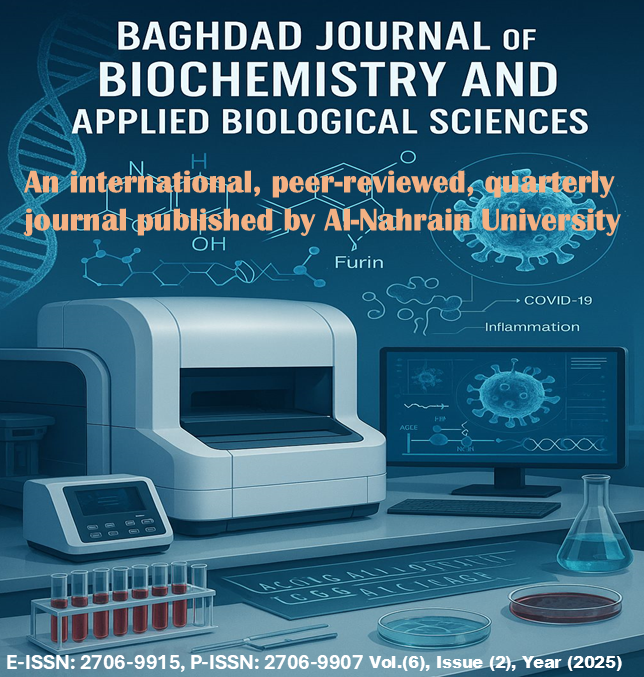In vitro and in vivo evaluation of antioxidant activity and phytochemical screening of Jordanian Gomphocarpus sinaicus boiss (Apocynaceae) extract
DOI:
https://doi.org/10.47419/bjbabs.v6i02.340Keywords:
antioxidant activity; Gomphocarpus sinaicus Boiss; phytochemical screening; in vitr, in vivoAbstract
Gomphocarpus sinaicus Boiss, belonging to the Apocynaceae family, is a medicinal plant known for its therapeutic properties. Although it has a history of traditional use, comprehensive studies investigating its phytochemical constituents and antioxidant potential are still limited. This study aimed to evaluate the phytochemical composition and antioxidant activities of various solvent extracts from the aerial parts of G. sinaicus Boiss, utilizing both in vitro and in vivo approaches. G. sinaicus Boiss has been traditionally used for various medicinal purposes. Therefore, this study sought to investigate the phytochemical constituents and assess the antioxidant potential of different solvent extracts of the plant's aerial parts. Aerial parts of G. sinaicus were extracted using solvents of varying polarities. Phytochemical screening was performed to identify secondary metabolites, and the total phenolic and flavonoid contents were quantified. We assessed antioxidant activity through DPPH•, ABTS⁺, ferrous ion chelation, and hydroxyl radical scavenging assays. Additionally, the in vivo antioxidant effects and acute toxicity of the butanolic extract were evaluated in BALB/c mice. G. sinaicus Boiss has been traditionally used for various medicinal purposes. This study aimed to investigate its phytochemical constituents and evaluate the antioxidant potential of different solvent extracts from the plant's aerial parts. The solvent extracts were analyzed for their phytochemical constituents, and the total phenolic and flavonoid contents were determined. Antioxidant activity was measured using DPPH•, ABTS⁺, ferrous ion chelation, and hydroxyl radical scavenging assays. The in vivo antioxidant effects and acute toxicity of the butanolic extract were assessed using BALB/c mice. Phytochemical screening revealed the presence of anthraquinones, terpenoids, flavonoids, saponins, alkaloids, tannins, and cardiac glycosides. The butanol and aqueous methanol extracts exhibited the highest contents of phenolics and flavonoids, displaying the strongest antioxidant activity across all assays. In the in vivo tests, the butanolic extract demonstrated an LD₅₀ of 116.64 mg/kg (intraperitoneally). Treated mice showed increased total glutathione levels and reduced protein carbonyl levels in both serum and liver homogenates. The butanolic extract of G. sinaicus Boiss exhibited potent antioxidant activity and favorable safety in vivo, indicating its potential as a natural source of antioxidants and therapeutic agents.
Metrics
Downloads
Downloads
Published
Issue
Section
Categories
License
Copyright (c) 2025 Salam H. Sabri, Jamil Al-Lahham , Mahmoud Al-Qudah

This work is licensed under a Creative Commons Attribution 4.0 International License.
The authors retain all proprietary rights, including copyright, such as patent and trademark rights and rights to any process or procedure described in the article.









